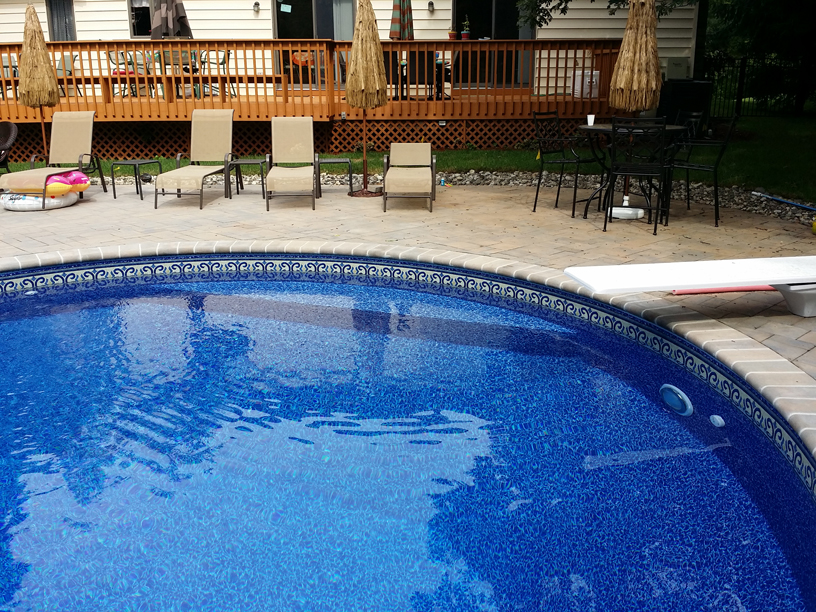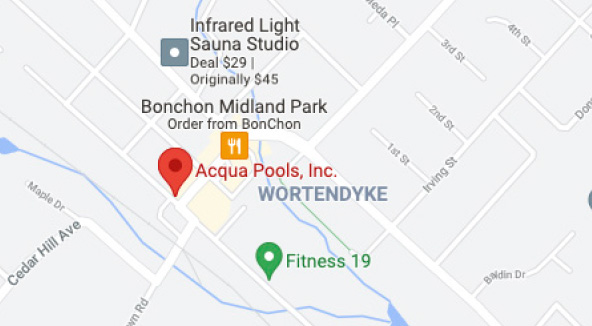Selecting the Proper Pool Finish
Pool Finish Pros and Cons
Today’s pool and spa owners have many reliable and beautiful swimming pool finish options available to them. From the straightforward simplicity of standard white plaster to the rainbow of multi-colored pebble finishes, and a spectrum of options between, the choices can be exciting – and also somewhat daunting without reliable information.
With so many finish options offered by today’s quality pool-finish specialists, it’s understandable that savvy customers should want to explore the specific benefits and drawbacks inherent in the various surface products. Unfortunately, the choices can be confusing and the information about these products is at times even somewhat contradictory.
To help guide you through the process of choosing the best finish for your home’s pool or spa, we’ll cover some of the relevant information you should keep in mind as you discuss your choices with your designer or pool surface contractor.
Perspectives on Finishes
In general, pool and spa finishes belong in their own special category, because unlike other masonry or “hardscape” surface products, finishes in pools and spas are constantly submerged in water. This obvious fact means that any pool finish will be exposed to varying water chemistry conditions over time, especially if the pool or spa is maintained improperly.
This constant exposure to pool and spa water, which is treated with a variety of powerful chemicals, creates a dynamic environment where mineral content of the surface and water are constantly interacting. This interaction between water and the surface is unavoidable and in many cases will cause the appearance of the surface to change, either slowly over time, or in some rare instances, far more rapidly.
In many cases these phenomena are purely cosmetic, in other more extreme situations, some surfaces will start to deteriorate. The decision you make in the planning stages of the pool or spa installation process will have a significant impact on how well your pool or spa maintains its appearance over time.
Classic White
Standard white plaster is the tried and true pool and spa surface finish. White plaster has been around as long as people have been building swimming pools and it remains a popular choice in spite of the myriad of choices that have come into the market in recent years. Its simple combination of white cement, white marble aggregate and water make for an economical choice that will give you that classic swimming pool look.
Strengths: When filled with water, pools and spas surfaced in white plaster create a brilliant, clean, light blue appearance that is very smooth to the touch. A long-time favorite for many customers, it remains the most affordable pool finish product on the market today. Standard white plaster is a reliable product when installed by a quality contractor and properly maintained.
Concerns: It’s important to know that white plaster is susceptible to all water conditions especially from attacks of improperly maintained or fluctuating chemical conditions. Therefore, it is only reasonable to expect that during the life of the product, it will change in appearance. These changes may be subtle or minor, perhaps slight shading or scaling, or far more dramatic in the form of pronounced staining, etching, cracking, or delaminating in extreme cases.
There are a great many variables in play when it comes to determining the exact cause of such changes in appearance and one could spend a lifetime exploring the complex chemical phenomena at the heart of these concerns. For the purpose of selecting standard white plaster it’s critical to be fully aware that it is a relatively “soft” finish compared to other options and one that is more susceptible to the effects of water chemistry than some newer innovative products. A
Note on Colored Plaster
By its nature, colored plaster will accentuate all of the characteristics normally found in white plaster. Mottling, for example, can be more pronounced in colored plaster than in white. Colored plaster may also exhibit pigment stains, streaks, unevenness of color and more noticeable checking and crazing. Also, variations of shade will exist between color sample chips and mixed plaster. Over time, the color may fade completely or grow gradually lighter and will often not be the precise shade that was anticipated. It’s important to note that none of these conditions are considered a deficiency of the product.
Additives to the Mix
Because many customers want the economy of standard plaster surfaces, but would also like to avoid some of the problems listed above, material suppliers have developed highly innovated chemical additives that can be used in the mixing and application of plaster. These products alter the physical and chemical composition of the plaster surface increasing its strength and durability – without sacrificing beauty or the smooth texture!
These products contain chemicals known as “pozzalans” that essentially take the weakest element in plaster (calcium hydroxide) and “lock it up” so that it is less susceptible to chemical attacks. Pozzolans – based products have been proven to reduce etching, cracking, mottling and other problems, as well. Another category of admixtures is based on silicone chemistry which has been proven to increase the plaster’s ability to repel water, thus helping protect it from chemical attack.
Strengths: The advantages to such innovative products are obvious. Without disrupting the natural beauty and smoothness of standard white or colored plaster, these admixtures increase the surface’s ability to resist the effects of fluctuating water chemistry.
Concerns: The primary concern with admixtures is that they do increase the cost of the pool or spa finish. And, it is important to note that while these products have been proven to help prevent surface problems, they are not fool-proof and in some cases you may still see changes in the surface’s appearance, although most likely to a far lesser degree.
Aggregate Effects – Colored Ceramic Quartz
Another highly innovative addition to the palette of surface options has been the use of special colored ceramic aggregate products. These aggregates are basically a very specialized form of ceramic-coated sand that comes in a variety of pre-mixed plaster products.
Strengths: When combined with white or colored plaster, aggregates afford a broad range of colors, from vivid blues and reds, to more subtle hues such as beige or soft greens as well. It also has the advantage of creating, a much more durable surface than standard plaster, one that is harder and far more resistant to fluctuating chemical conditions.
Concerns: Again surfaces using aggregates are more expensive than standard plaster and can also be susceptible to some surface problems, especially in the presence of extreme water chemistry conditions.
The Exposed Aggregate Revolution
Perhaps the ultimate answer to all pool surface concerns comes in the form of pebble surfaces. Pebble surfaces consist of small, smooth river pebbles embedded throughout the product. Over the past decade, pebble surfaces have increased dramatically in popularity and come in a broad range of colors and color combinations.
Strengths: Pebble surfaces are beautiful, extremely natural in appearance, come in a wide range of colors and they are the most durable surface available. Because the stone material that comprises river pebbles is “chemically inert”, it is unlikely to react with swimming pool or spa water and is therefore less impervious to attack or alterations in appearance.
Concerns: Because the surface is comprised of pebbles, it is slightly more textured than the surfaces described above. It is also more costly and under the most extreme chemical conditions, even pebble surfaces can suffer damage.
The Choice is Yours
Any of the products and surface options listed here can provide years of reliable performance and dazzling beauty in a well-made and well-maintained pool or spa. The key to enjoying that success, and avoiding unexpected frustration, is to understand the strengths and weaknesses of each, and to choose wisely.
Water Chemistry Defined
The importance of balanced water chemistry cannot be overstated in its role in maintaining the appearance of quality pool and spa surface products.



